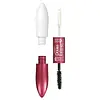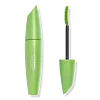What's inside
What's inside
 Key Ingredients
Key Ingredients

 Benefits
Benefits

 Concerns
Concerns

 Ingredients Side-by-side
Ingredients Side-by-side

Water
Skin ConditioningParaffin
PerfumingPotassium Cetyl Phosphate
EmulsifyingAcrylates Copolymer
Cera Alba
EmollientCopernicia Cerifera Cera
EmollientSteareth-2
EmulsifyingCetyl Alcohol
EmollientPhenoxyethanol
PreservativeHydroxyethylcellulose
Emulsion StabilisingAcacia Senegal Gum
MaskingRayon
Panthenol
Skin ConditioningEthylenediamine/Stearyl Dimer Dilinoleate Copolymer
Skin ConditioningMethylparaben
PreservativeSodium Dehydroacetate
PreservativeHydrogenated Jojoba Oil
AbrasiveHydrogenated Palm Oil
Emollient2-Oleamido-1,3-Octadecanediol
Skin ConditioningDisodium EDTA
Ethylparaben
PreservativeSimethicone
EmollientRosa Canina Fruit Oil
EmollientIsopropylparaben
PreservativeIsobutylparaben
AntimicrobialButylparaben
MaskingStyrene/Acrylates/Ammonium Methacrylate Copolymer
Butylene Glycol
HumectantAlcohol Denat.
AntimicrobialAcrylamide/Sodium Acryloyldimethyltaurate Copolymer
Emulsion StabilisingIsohexadecane
EmollientSodium Laureth-12 Sulfate
CleansingPolysorbate 80
EmulsifyingImidazolidinyl Urea
PreservativeCI 77891
Cosmetic ColorantCI 77491
Cosmetic ColorantCI 77499
Cosmetic ColorantCI 77007
Cosmetic ColorantMica
Cosmetic ColorantCI 75470
Cosmetic ColorantCI 77289
Cosmetic ColorantCI 77510
Cosmetic ColorantWater, Paraffin, Potassium Cetyl Phosphate, Acrylates Copolymer, Cera Alba, Copernicia Cerifera Cera, Steareth-2, Cetyl Alcohol, Phenoxyethanol, Hydroxyethylcellulose, Acacia Senegal Gum, Rayon, Panthenol, Ethylenediamine/Stearyl Dimer Dilinoleate Copolymer, Methylparaben, Sodium Dehydroacetate, Hydrogenated Jojoba Oil, Hydrogenated Palm Oil, 2-Oleamido-1,3-Octadecanediol, Disodium EDTA, Ethylparaben, Simethicone, Rosa Canina Fruit Oil, Isopropylparaben, Isobutylparaben, Butylparaben, Styrene/Acrylates/Ammonium Methacrylate Copolymer, Butylene Glycol, Alcohol Denat., Acrylamide/Sodium Acryloyldimethyltaurate Copolymer, Isohexadecane, Sodium Laureth-12 Sulfate, Polysorbate 80, Imidazolidinyl Urea, CI 77891, CI 77491, CI 77499, CI 77007, Mica, CI 75470, CI 77289, CI 77510
Water
Skin ConditioningAcrylates Copolymer
Glyceryl Stearate
EmollientDisteardimonium Hectorite
StabilisingStearic Acid
CleansingCopernicia Cerifera Wax
Propylene Glycol
HumectantTriethanolamine
BufferingPolyethylene
AbrasiveLecithin
EmollientPropylene Carbonate
SolventPolyvinyl Alcohol
Synthetic Wax
AbrasiveOleic Acid
EmollientAlcohol Denat.
AntimicrobialBenzyl Alcohol
PerfumingPanthenol
Skin ConditioningPhenoxyethanol
PreservativeMethylparaben
PreservativeGlycerin
HumectantEthylparaben
PreservativePropylparaben
PreservativeAscorbyl Palmitate
AntioxidantXanthan Gum
EmulsifyingTocopherol
AntioxidantTrisodium EDTA
Simethicone
EmollientTocopheryl Acetate
AntioxidantMethylcellulose
Emulsion StabilisingIron Oxides
Ultramarines
Titanium Dioxide
Cosmetic ColorantWater, Acrylates Copolymer, Glyceryl Stearate, Disteardimonium Hectorite, Stearic Acid, Copernicia Cerifera Wax, Propylene Glycol, Triethanolamine, Polyethylene, Lecithin, Propylene Carbonate, Polyvinyl Alcohol, Synthetic Wax, Oleic Acid, Alcohol Denat., Benzyl Alcohol, Panthenol, Phenoxyethanol, Methylparaben, Glycerin, Ethylparaben, Propylparaben, Ascorbyl Palmitate, Xanthan Gum, Tocopherol, Trisodium EDTA, Simethicone, Tocopheryl Acetate, Methylcellulose, Iron Oxides, Ultramarines, Titanium Dioxide
Ingredients Explained
These ingredients are found in both products.
Ingredients higher up in an ingredient list are typically present in a larger amount.
Acrylates Copolymer is used as a film-forming agent and texture enhancer.
After applied, Acrylates Copolymer forms a thin film cover that helps skin feel more soft. It can help sunscreens become more water-resistant.
It is also used to make a product more thick.
Learn more about Acrylates CopolymerAlcohol Denat. is an alcohol with a denaturant property. It is created by mixing ethanol with other additives.
This ingredient gets a bad rep because it is irritating and drying - mostly due to its astringent property. Astringents draw out natural oils in tissue, constricting pores and leaving your skin dried out.
However, alcohol denat. is not all that bad.
Due to its low molecular weight, alcohol denat. tends to evaporate quickly. One study on pig skin found half of applied alcohol evaporated in 10 seconds and less than 3% stayed on skin.
This also helps other ingredients become better absorbed upon application.
Studies are conflicted about whether this ingredient causes skin dehydration. One study from 2005 found adding emollients to propanol-based sanitizer decreased skin dryness and irritation. Another study found irritation only occurs if your skin is already damaged.
Small amounts of alcohol are generally tolerated by oily skin or people who live in humid environments.
The rule of thumb is if this alcohol is near the end of an ingredients list, it will probably not affect your skin much.
Also...
This ingredient has antimicrobial and solvent properties.
The antimicrobial property helps preserve products and increase their shelf life. As a solvent, it helps dissolve other ingredients.
Other types of astringent alcohols include:
Learn more about Alcohol Denat.Ethylparaben is a preservative, is a paraben, and is not reef safe.
Methylparaben is a preservative and is a paraben. It is used to prevent the growth of fungus, mold, and other harmful bacteria. Parabens are chemicals used as preservatives in both cosmetics and food.
Methylparaben can be synthetically created. It can also be found naturally in some fruits, such as blueberries.
Oftentimes, Methylparaben is combined with other parabens to help increase the shelf life.
The safety of Methylparaben is currently being studied. While ongoing studies are looking into the safety of parabens, the results have been very mixed. Some studies have not found Methylparaben to be harmful.
Learn more about MethylparabenPanthenol is a common ingredient that helps hydrate and soothe the skin. It is found naturally in our skin and hair.
There are two forms of panthenol: D and L.
D-panthenol is also known as dexpanthenol. Most cosmetics use dexpanthenol or a mixture of D and L-panthenol.
Panthenol is famous due to its ability to go deeper into the skin's layers. Using this ingredient has numerous pros (and no cons):
Like hyaluronic acid, panthenol is a humectant. Humectants are able to bind and hold large amounts of water to keep skin hydrated.
This ingredient works well for wound healing. It works by increasing tissue in the wound and helps close open wounds.
Once oxidized, panthenol converts to pantothenic acid. Panthothenic acid is found in all living cells.
This ingredient is also referred to as pro-vitamin B5.
Learn more about PanthenolPhenoxyethanol is a preservative that has germicide, antimicrobial, and aromatic properties. Studies show that phenoxyethanol can prevent microbial growth. By itself, it has a scent that is similar to that of a rose.
It's often used in formulations along with Caprylyl Glycol to preserve the shelf life of products.
Simethicone is a silicone. It is an emollient and used to reduce foaming in a product. It is also often used to coat sunscreen ingredients for better spreadability.
This ingredient is created by mixing dimethylpolysiloxane and hydrated silica.
Water. It's the most common cosmetic ingredient of all. You'll usually see it at the top of ingredient lists, meaning that it makes up the largest part of the product.
So why is it so popular? Water most often acts as a solvent - this means that it helps dissolve other ingredients into the formulation.
You'll also recognize water as that liquid we all need to stay alive. If you see this, drink a glass of water. Stay hydrated!
Learn more about Water